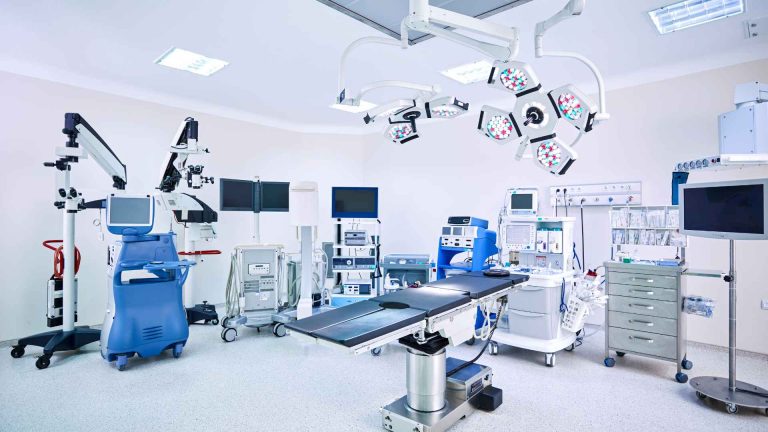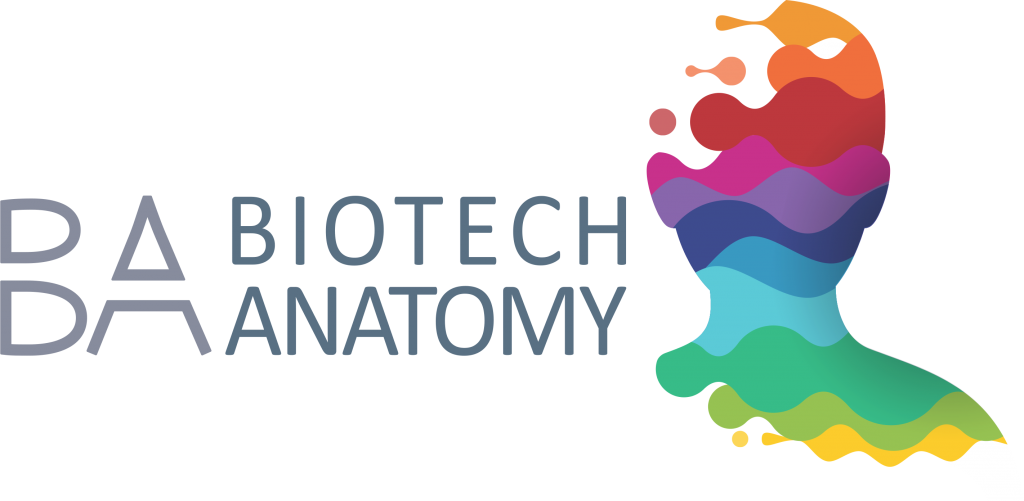Simulation-based education (SBE) is transforming surgical training, offering a dynamic approach to mastering complex procedures. It’s a key player in the modern educational toolkit, providing a safe, controlled environment where trainees can hone their skills without risk to patients.
With the surgical landscape evolving rapidly, SBE is crucial in bridging the gap between theoretical knowledge and real-world application. It allows for the rehearsal of scenarios across various levels of complexity, ensuring surgeons are well-prepared for the operating room’s challenges.

Benefits of Simulation in Surgical Training
The integration of simulation-based education (SBE) in surgical curricula has reshaped how future surgeons refine their competencies. SBE has a spectrum of utilities in surgical training, achieving outcomes that traditional teaching models fall short of.
Simulation allows for the rehearsal of complex procedures without placing patients at risk. This “hands on” education proves critical for developing and honing procedural skills outside of high-stakes environments. Trainees benefit from the opportunity to practice maneuvers multiple times, which is not always feasible or ethical in real-life settings.
The use of simulation goes beyond mere technique to enhance the critical cognitive skills necessary for successful surgeries. These include decision-making, problem-solving, and managing unexpected operative scenarios. By practicing in a simulated environment, surgeons can again and again navigate challenges that they will eventually face in the operating room.
Data underscores the effectiveness of simulation in surgical training:
| Benefit | Data Reference |
| Improved surgical performance | 66-68 |
| Reduced surgery times | 66-68 |
| Decreased error rates | 66-68 |
| Improved patient outcomes | 66-68 |
| Reduction in surgical complications | 69-71 |
| Development of surgical skills for trainees | 69-71 |
| Shortened operative times | 69-71 |
Indeed, specific simulators, such as benchtop and laparoscopic box simulators, have evidenced improving hand-eye coordination and dexterity, foundational skills for all surgeons. Such tools facilitate the teaching of complex tasks in a cost-effective manner, presenting significant advantages for medical institutions and trainees alike.
Moreover, the MISTELS protocol, pivotal in laparoscopic training, has become a standard component in many surgical training programs due to its proven effectiveness. Emphasizing these advantages can lead to tailored curricula that address both the demands of the healthcare industry and the educational needs of surgical residents.
Enhanced Skills Acquisition
In the ever-evolving field of healthcare, simulation-based education (SBE) plays a critical role in the development of surgical trainees. As the use of simulation in surgical training garners more significance, it’s important to understand its direct impact on skills acquisition for surgeons and healthcare professionals.
Precise psychomotor skills are essential for successful surgical outcomes. Simulation aids in honing these skills, particularly when it comes to specialties such as endoscopic surgery which demands exceptional hand-eye coordination and the ability to perform ambidextrous maneuvers. A landmark study by Seymour et al. illustrated the benefits of simulation training. They randomly assigned 16 trainees to traditional vs. simulation-based laparoscopic training with the following results:
| Group | Dissection Speed Increase | Error Reduction | Progress Improvement Odds |
| Simulator | 29% Faster | Five Times Less | Nine Times More |
Trainees who received simulation training completed tasks more swiftly and with fewer errors. Moreover, they displayed a tendency to achieve consistent progress in their surgical techniques. In a corroborating study by Grantcharov et al., trainees exposed to laparoscopy via simulators were significantly faster and produced lower error scores than their counterparts who went through traditional training methods.
Incorporation of haptic feedback in simulators introduces tactile experience to the training process, which potentiates the sensory perception vital to surgery. Such enhancement of sensation and awareness was found to be particularly critical during the early phases of a surgeon’s education, enabling a smoother transition of skills from the simulated environment to the operating room.
As technology in SBE continues to evolve, the feedback mechanisms simulate not just the visual and tactile elements of surgery but also the stressors and decision-making scenarios encountered during actual procedures. This immersive experience is indispensable in preparing surgeons for the range of complexities they will face in clinical settings.
Through a structured curriculum that includes advancements such as the Modified Inanimate System for Training and Evaluation of Laparoscopic Skills (MISTELS), participants gain mastery over specific task elements crucial for high-stakes operations. Ultimately, the incorporation of simulation into surgical training embodies a profound shift – not only in how surgical skills are taught but also in how well-prepared healthcare professionals are as they step into the operating theater.
Increased Patient Safety
The integration of simulation in surgical training has a pivotal role in advancing patient safety. Surgeons and healthcare professionals gain practical experience in a risk-free environment, sharpening their skills on high-fidelity simulators that mimic real-life scenarios with remarkable precision.
Simulation-based education (SBE) averts potential risks to patients by allowing trainees to master complex procedures before entering the operating room. This method of training supports the adage that practice makes perfect, fostering an environment where repetition and refinement of surgical techniques can occur without the dire consequences of real-life surgery mistakes.
In this ever-evolving medical landscape, technological advancements have led to more intricate surgical interventions which demand a high degree of precision and skill. Through the use of simulation, healthcare professionals are better equipped to handle these complex cases, thereby reducing errors and improving outcomes for patients. Studies show that simulation-trained surgeons display enhanced performance metrics, translating into safer surgical practices and elevated care standards.
Additionally, simulation serves as a crucial tool for assessing the proficiency of surgeons, ensuring that only those who meet specific competencies can perform procedures. This gate-keeping element of simulation further underscores its significance in safeguarding patient well-being. It’s not just about what is the use of simulation in surgical training; it’s understanding that through SBE, the margin of error is minimized while surgeons’ confidence and competence are bolstered.
Emergency skills, in particular, benefit from simulation training. Surgeons and healthcare pros are frequently met with high-stress, time-sensitive situations where swift, accurate interventions are lifesaving. Here, simulation drills are invaluable, reinforcing procedural memory and decision-making speed under pressure.
By enabling surgeons to anticipate challenges and refine their techniques beforehand, patients are less likely to suffer from complications. This proactive approach to medical education is a cornerstone of contemporary surgical training programs, putting patient safety at the forefront.
Bridge between Theory and Practice
In the dynamic world of surgical training, the role of simulation-based education (SBE) cannot be overstated. As the medical field evolves, there’s an increasing focus on how to bridge the gap between theoretical knowledge and actual practice. SBE has emerged as an essential tool, propelling the use of simulation in surgical training to new heights.
At its core, SBE serves as a practical conduit, transferring book-learned theories to hands-on skills necessary in the high-stakes environment of surgery. Biotech Anatomy LTD understands the deeper implications of this educational strategy. By embedding programmatic SBE within the curriculum, the organization has seen firsthand the transformation in trainees’ competence and confidence.
Trainers observe that those trainees who have engaged in simulation arrive in surgical theaters not just with technical know-how but with sharpened emergency skills and minimally invasive procedure techniques. Their preparation translates into an enhanced learning experience—one in which they seamlessly integrate with the surgical process, equipped with a grounded understanding of every maneuver’s purpose and outcome.
It’s not just the physical dexterity that benefits. Simulation in surgical training places emphasis on the development of nontechnical skills—arguably the linchpin of successful surgery. Communication, teamwork, and decision-making are all honed to perfection in the simulated environment. Through continued feedback and positive reinforcement, these elements are inculcated into the training regime, making sure that surgeons and healthcare professionals are wholly prepared for real-world scenarios.
Biotech Anatomy LTD tailors simulation to a vast array of specialties, from neurosurgery and otolaryngology to podiatry and plastic and reconstructive surgery, each with its intricacies and demands. The programmatic SBE implemented here is continually refined to stay abreast of the learning needs and professional demands, ensuring trainees’ experiences are consistently aligned with current practices.
With a firm grasp on education theory and an eye on the nuances of each surgical field, this bridge between abstract knowledge and tactile expertise is not just built—it’s traversed daily by the medical professionals who are redefining what it means to be expertly trained.
Realistic Scenario Reproduction
Simulation-based education (SBE) in surgical training is a leap towards honing the essential skills surgeons require. Biotech Anatomy LTD is a pioneering institution, offering surgeons and healthcare professionals unparalleled Continuing Medical Education (CME) opportunities. SBE facilitates the transition from theoretical learning to executing surgeries with precision and confidence. Core to this training is the reproduction of realistic scenarios within the controlled environment of a simulation lab.
Surgeons routinely face high-stakes situations where rapid, informed decision-making is crucial. SBE serves as the conduit by which one’s responses in simulation directly translate to real-world competencies. This is particularly effective in areas such as Neurosurgery and Spinal Surgery, where the margin for error is minimal. Biotech Anatomy LTD’s simulation rooms are equipped with advanced computerized imagery that mimics entire operations, from Foot and Ankle Surgery to Head and Neck Surgery, with extraordinary high fidelity.
The range of available simulations is as diverse as the surgical field itself, covering specializations such as Otolaryngology, Orthopedic, and even Cosmetic Surgery. These state-of-the-art facilities deliver a safe and controlled environment, conducive to learning new protocols or mastering complex Minimally Invasive Procedures. Trainees can practice scenarios time and again, honing their skills until the actions become second nature.
For surgeons looking to level up their emergency skills, Biotech Anatomy LTD provides hyper-realistic simulation environments. Here, practitioners can refine their Emergency Skills, reacting to life-threatening situations without the fear of real-world consequences. This not only improves technical ability but also nontechnical skills like communication and teamwork, vital in handling urgent care.
Beyond the operating room, the simulation extends to educational spaces for theoretical learning in Podiatry, Plastic and Reconstructive Surgery, and other niches. With SBE’s interactive nature, healthcare professionals witness the immediate effect of their actions, providing a dynamic and compelling learning experience. They’re not only absorbing information but applying it in practice – a combination that constitutes the core of what simulation offers in surgical training.
Customized Training Programs
In today’s rapidly evolving medical landscape, Customized Training Programs are critical for the advancement of surgical expertise. Biotech Anatomy LTD understands this need and has taken strides to furnish simulation-based education (SBE) tailored to diverse surgical specialties. From neurosurgery to cosmetic surgery, these programs replicate the complexities of real-life surgical challenges.
Simulation serves as a foundational tool for surgical training, where the practical application of learned skills takes precedence. For instance, neurosurgery requires a high level of precision and dexterity, both of which can be honed through simulation before stepping into an actual operating room. Similarly, practitioners of otolaryngology can benefit from SBE as it presents opportunities to engage with intricate procedures in a risk-free environment.
Focus is not solely placed on technical prowess; nontechnical skills such as effective communication and teamwork are integrated into the curriculum to round out a surgeon’s competence. Engaging with scenarios that mimic the high-stress nature of emergency skills or minimally invasive procedures allows participants to develop these essential competencies alongside clinical expertise.
The designed SBE programs by Biotech Anatomy LTD extend across various fields including:
- Foot and ankle surgery
- Hand and wrist microsurgery
- Head and neck surgery
- Spinal surgery
- Podiatry
- Orthopedic surgery
Each program is meticulously structured to not only convey core surgical intricacies but also to emphasize the human element of surgery. Sessions delve into the gamut of plastic and reconstructive surgery as well, providing vital opportunities for surgeons in this specialty to refine their aesthetic judgment and technical skill.
The appeal of these training programs also lies in their ability to offer continuous learning through various stages of a surgeon’s career. From newcomers eager to grasp the basics to seasoned professionals looking to stay abreast of the latest techniques in minimally invasive procedures, Biotech Anatomy LTD’s simulation training is pivotal.
By integrating simulation in the early stages of surgical education, the training effectively builds a solid base upon which surgeons can expand their knowledge. Feedback workshops and bootcamps further enrich this learning experience, ensuring trainers themselves are well-equipped to foster the next generation of skilled professionals.
Training programs are not static; they evolve through continuous evaluation and iterative refinement, ensuring they meet the demands of modern healthcare. Such commitment to excellence in surgical training upholds the belief that with the right blend of technology and skilled guidance, surgeons can attain unprecedented levels of surgical dexterity and care.
Improved Team Collaboration
In the realm of surgical training, team collaboration has emerged as a cornerstone for success. Simulation-based education (SBE), provided by institutions like Biotech Anatomy LTD, offers an innovative pathway to foster this collaborative spirit among surgeons and healthcare professionals.
Simulation extends beyond individual skill enhancement, deeply ingraining the principles of teamwork and interdependent learning. By simulating the high-pressure environment of an operating room, teams can practice coordinated responses to an array of challenges they might face during actual surgery. This experience is vital not only for novices but also for seasoned professionals seeking to refine their collaborative techniques.
Through SBE programs, surgeons in various fields including neurosurgery, otolaryngology, and orthopedic surgery can rehearse complex procedures, improving their communication and role clarity. For instance, foot and ankle surgery simulations allow podiatrists to work alongside orthopedic surgeons, optimizing the synergy required in multi-disciplinary interventions.
Studies have shown that incorporating VR-based simulations into the curriculum leverages the team-based structure inherent in most surgical residency programs. This integration facilitates an enhanced learning environment, much like the teamwork found in aviation that has been successfully adapted to medical training.
At the heart of this collaboration are positive experiences from both trainers and trainees. Trainers report noticeable improvements in trainee confidence and competence—benefits that owe themselves to the hands-on, repeated practice of SBE. It’s not just technical skills that are refined; nontechnical skills critical for surgery such as decision making and stress management are also sharpened during these sessions.
The transformative impact of team-based simulations in training is not future speculation—it’s a present reality. Learners absorb lessons of interdependence and innovation, elements that are crucial to increasing physician quality. Reflecting on the immediate benefits, one can anticipate a progressive evolution in surgical efficiency and patient outcomes going forward.
Conclusion
Simulation in surgical training stands as a transformative force, shaping the future of surgical education. By harnessing the power of team-based simulations and VR technology, programs like those from Biotech Anatomy LTD are revolutionizing how surgeons hone their craft. They’re not just learning the mechanics of surgery but also mastering the art of teamwork and communication, which are vital in high-stakes operating room environments. The result is a new breed of surgeon—more confident, competent, and prepared to deliver superior patient care. As the medical community continues to embrace these innovative training methods, the benefits are clear: better-trained surgeons lead to more efficient surgeries and ultimately, improved patient outcomes.
Frequently Asked Questions
What are the benefits of a surgeon using surgery simulations?
Simulation-based education allows surgeons to practice and refine their technical skills in a risk-free environment, enhance teamwork, and improve communication, consequently increasing overall patient safety.
What is the purpose of simulations as a training model?
Simulations serve as a practical learning tool, offering trainees experiential learning opportunities that closely mimic real-world scenarios, traditionally seen in high-stakes industries like aviation and the military.
What is the purpose of medical simulation?
Medical simulation enables the acquisition and refinement of clinical skills in a safe, controlled environment where trainees can learn from mistakes without endangering patient health.
What is an example of a surgical simulator?
Examples of surgical simulators include human cadavers, animal models, bench-top trainers, and advanced technologies like virtual reality systems, all designed to replicate actual surgical experiences for training purposes.
Why is simulation learning important?
Simulation learning is critical as it fosters critical and evaluative thinking, presents complex, ambiguous scenarios for problem-solving, and encourages active, engaged participation due to its realistic nature.





